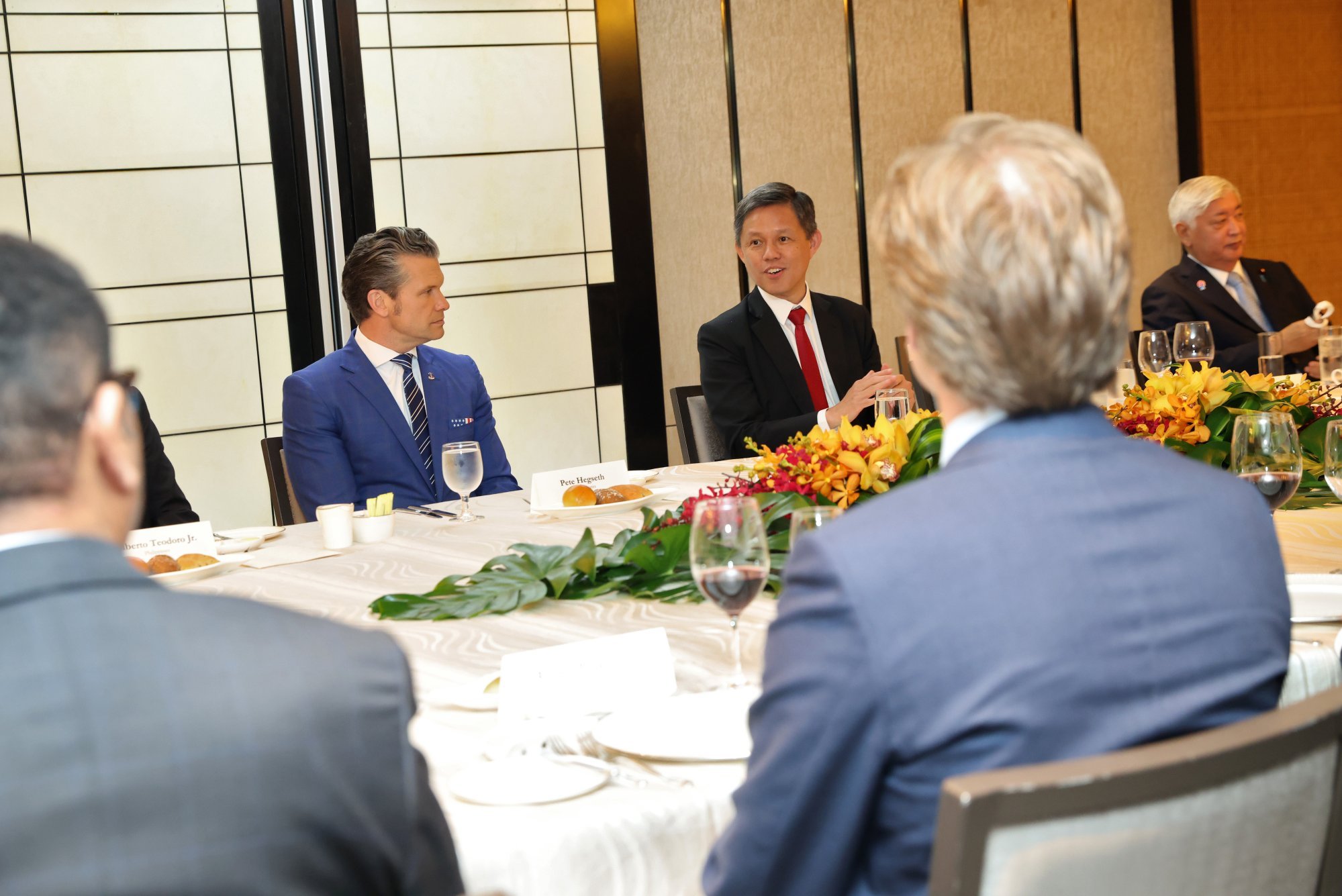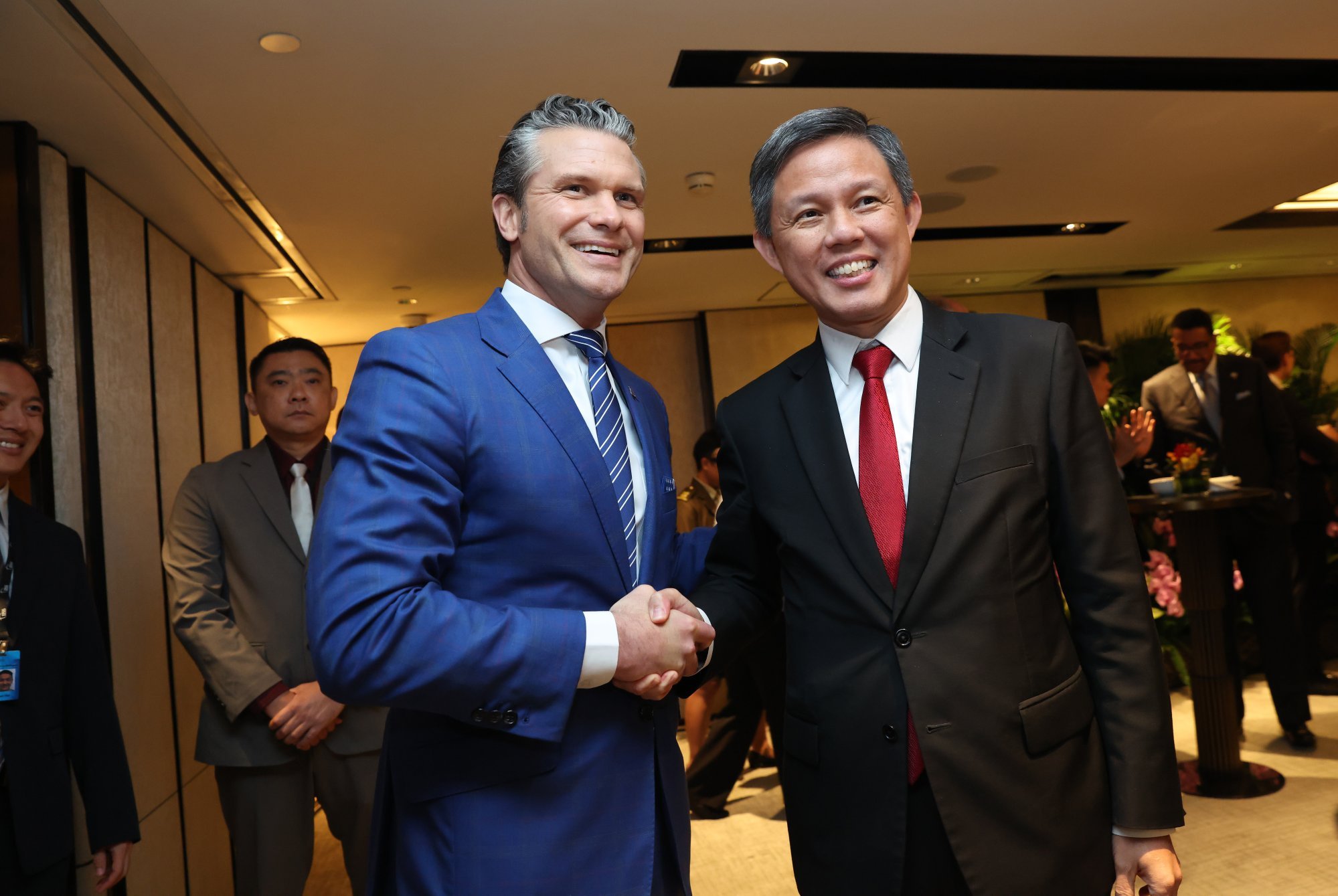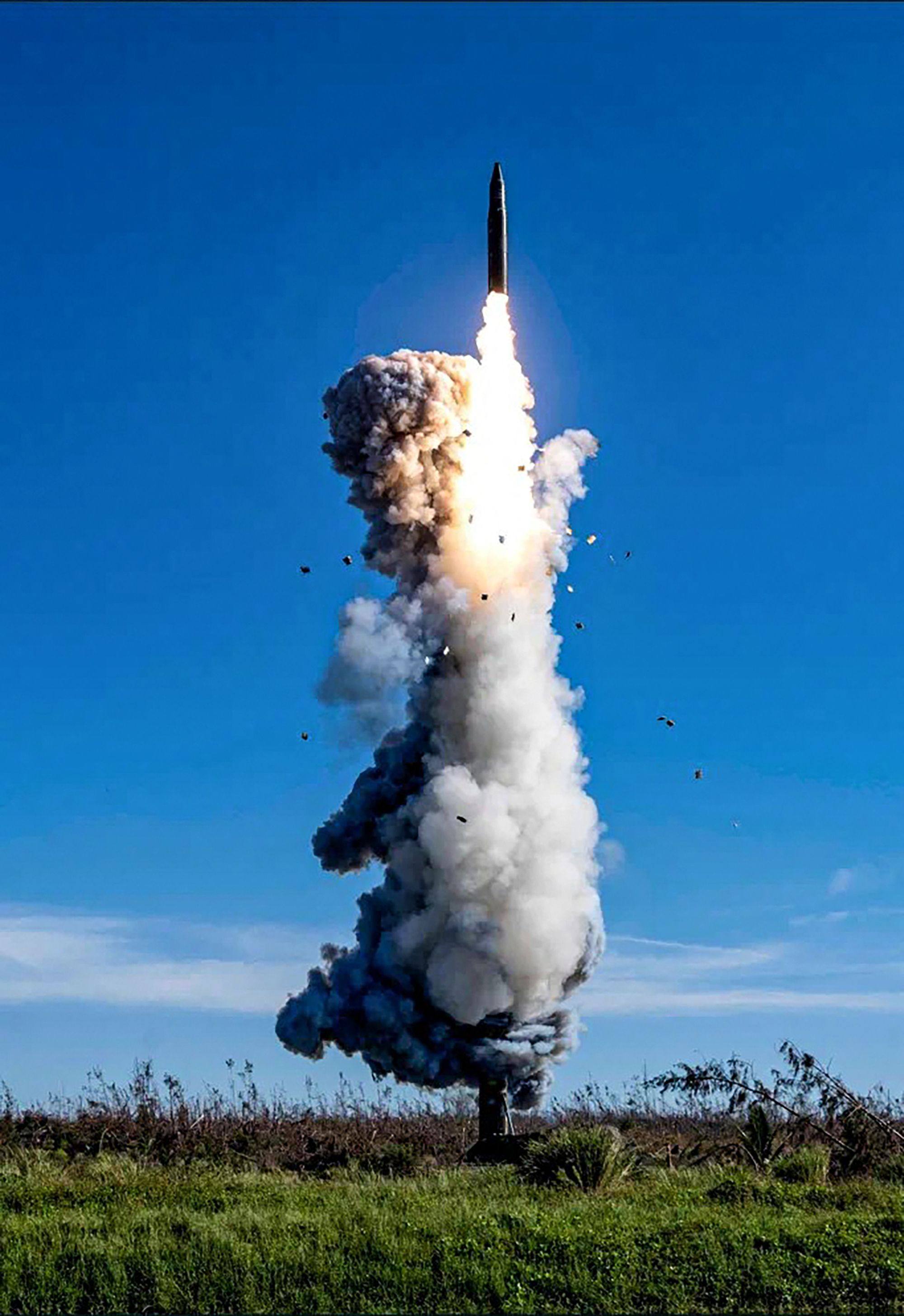China’s absence felt at Shangri-La Dialogue, Singapore’s defence chief says
Defence chief Chan Chun Sing urges dialogue to boost ‘clarity’ of intentions, says Singapore remains open, inclusive platform for frank discussions

Singapore’s defence minister has said attendees at a premier security summit hosted by his country would have wanted China’s defence chief to be present to avoid misunderstandings, as the absence of a high-ranking leader from Beijing continues to reverberate on the second day of the Shangri-La Dialogue (SLD).
Speaking to the media on Saturday following a closed-door ministerial roundtable, a regular feature at the SLD for minister-level attendees, Singapore Defence Minister Chan Chun Sing said most at the session would have hoped for the Chinese delegation to attend.
“I think it will be fair to say that most if not everyone around the table would have hoped for the presence of the Chinese delegation because the Shangri-La Dialogue has continued to grow over all these years […] and that’s because many people found it useful; a useful platform to exchange perspectives,” Chan said.
China did not send Defence Minister Dong Jun to the SLD, a departure from its practice since 2019. Instead, a delegation from the National Defence University is in Singapore to attend the forum, which began on Friday and will last till Sunday.

Meanwhile, Chan, who hosted the roundtable for the first time as Singapore’s defence chief, said there might be disagreements among ministers of various countries, but it was important that the platform minimised any chance of miscalculations or misinterpretations.
“It is only through dialogues that we can have this clarity of one another’s intention, and that is very useful,” Chan said, adding that while he could not speak for China on its choice of delegates, Singapore would continue to welcome Beijing’s participation in future conferences.
On the city state’s role in a complex world, Chan said Singapore would continue to be an open and inclusive platform for countries to come together for frank discussions.
“Where necessary where it’s appreciated, we will also share with our partners our perspectives, our interpretations, and likewise we appreciate our partners sharing with us their perspectives and their interpretations of events.”
Of the discussions by the 28 ministers at the roundtable, Chan noted a shift in the conventional understanding of security through a geographical lens and as a domain limited to the military.
“There’s a greater awareness of the other dimensions of security, including economic security. How economic security and traditional military security can be intertwined, and if a country is economically insecure – chances are that it is not so easy for it to feel militarily secure as well,” he said.

Despite the absence of Beijing’s top defence delegate, the world’s second-largest economy continued to loom as a topic of discussion across panels and speeches on the second day of the SLD.
American Defence Secretary Pete Hegseth earlier quipped that China’s decision not to send its top defence minister was indicative of its lack of commitment to the region, unlike the United States.
“As a matter of fact, we are here this morning – somebody else isn’t,” he said.
On China’s aggression in the disputed waters of the South China Sea, Malaysia’s Prime Minister Anwar Ibrahim sought to downplay the tensions between both sides, describing the situation as “exaggerated”.
“I’ve seen my friend President Bong Bong Marcos and [Chinese Premier] Li Qiang engaging during the Asean meeting in Kuala Lumpur. We hope that continues. There is no way out except the engagement between countries and we will support that position,” he said, referring to the Association of Southeast Asian Nations.

Besides the South China Sea dispute, other panellists highlighted China’s rapid expansion of nuclear capabilities as a threat to balance of power in the region.
Australian Deputy Prime Minister Richard Marles warned that Beijing was rapidly expanding and modernising its nuclear capabilities to “reach parity with or surpass the United States”.
This is another reason the future of strategic arms control must be revitalised, he said.
“China is embarked on the largest conventional military build-up since the end of World War II, and it’s doing so without providing any strategic transparency or reassurance, and this remains a defining feature of the strategic complexity that the Indo-Pacific and the world faces today,” he warned.
Last December, the Pentagon released a report which said China had expanded its number of operational nuclear warheads to 600 and boosted the diversity and sophistication of its arsenal.
In recent years, the Pentagon has repeatedly assessed that China’s nuclear arsenal development is exceeding US expectations, noting first in its 2021 report that Beijing’s nuclear warheads could top 1,000 by 2030.
As of May 2023, the Pentagon estimated that China possessed more than 500 operational nuclear warheads. By mid-2024, that number had surged by about 20 per cent to 600, according to the December report.